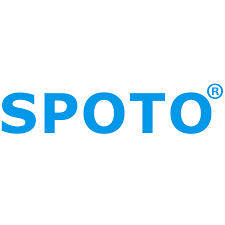
SPOTO Cisco Expert
- SPOTO Cisco Expert
Settle a problem:66
1.0 Executive Summary
This document addresses the challenge of modernizing data center network operations through a unified and streamlined methodology. The core problem is the operational complexity arising from managing disaggregated tools for provisioning, monitoring, and troubleshooting across single or multi-site data center fabrics. The initial resources available often present a collection of guides without a cohesive, actionable implementation path. This document synthesizes those resources and enhances them with critical engineering best practices to provide a robust, three-phased solution for deploying and operationalizing the Cisco Nexus Dashboard platform. The objective is to transition from fragmented management to a centralized, automated operational model.
2.0 Phase 1: Planning and Architectural Prerequisites
Success with Nexus Dashboard begins with a thorough planning phase, which is often underestimated. Before any deployment activity, it is critical to establish the foundational architecture.
- Define the Operational Scope: Determine the immediate and future scope. Will this deployment manage a single VXLAN EVPN fabric, or will it orchestrate multiple sites (Multi-Site)? This decision dictates whether the primary application will be Nexus Dashboard Fabric Controller (NDFC) alone or in conjunction with Nexus Dashboard Orchestrator (NDO).
- Physical and Virtual Resource Planning: Based on the scale of the fabrics (number of switches, endpoints, and desired telemetry data), provision the appropriate resources for the Nexus Dashboard cluster. For production environments, a 3-node cluster is the mandatory baseline for high availability and scalability. Consult the official Nexus Dashboard capacity planning guides to ensure correct allocation of CPU, memory, and storage for the chosen physical (Cisco UCS) or virtual (VMware ESXi, KVM) appliance form factor.
- Network Infrastructure Readiness: The Nexus Dashboard cluster requires two key network interfaces per node: a management interface for administrative access and a data interface for communication with the managed fabrics and for intra-cluster traffic. Best practice dictates placing these on separate, highly available, and low-latency network segments. Ensure essential network services like DNS for name resolution and NTP for time synchronization are reliable and accessible from both networks. All switch management interfaces (mgmt0) must have IP connectivity to the Nexus Dashboard’s data network.
3.0 Phase 2: Platform Deployment and Fabric Onboarding
This phase covers the technical implementation of the Nexus Dashboard platform and the integration of the existing network fabric.
- Step 1: Nexus Dashboard Cluster Deployment: Deploy the three nodes of your Nexus Dashboard cluster according to the chosen form factor. Run the setup wizard to configure the cluster’s core parameters, including management and data network IP addresses, gateway, DNS, and NTP settings. Once the cluster is formed and healthy, access the unified user interface.
- Step 2: Application Installation: Navigate to the Nexus Dashboard App Store and download and enable the required services. At a minimum, this will include Nexus Dashboard Fabric Controller (NDFC). For assurance and troubleshooting, also install Nexus Insights (NI). For multi-site orchestration, install Nexus Dashboard Orchestrator (NDO).
- Step 3: Fabric Discovery and Onboarding with NDFC:
- Pre-configuration: Ensure that the target fabric switches are running a supported NX-OS version and have HTTPS server (for NX-API) or NETCONF services enabled.
- Discovery: Within NDFC, define the seed IP address of at least one switch in the fabric and provide the necessary administrative credentials. NDFC will use this seed switch and protocols like LLDP to discover the entire fabric topology.
- Import and Manage: Once discovered, import the fabric into NDFC. It will perform a configuration compliance check and bring the fabric under its management domain. From this point forward, NDFC becomes the source of truth for all fabric configuration changes, moving operations from a per-box CLI model to a centralized, policy-driven one.
4.0 Phase 3: Day-2 Operationalization and Assurance
With the fabric under management, the focus shifts to leveraging the platform for ongoing operations, visibility, and automation.
- Activate Nexus Insights (NI): Configure Nexus Insights to use NDFC as its data source. NI will begin collecting and analyzing telemetry data from the fabric switches. This is the foundation for establishing a network performance baseline, detecting anomalies, and providing proactive advisories.
- Establish an Operational Runbook: Integrate Nexus Dashboard’s tools into your daily workflow.
- Provisioning: All fabric changes (e.g., new VLANs, VRFs, network attachments) must be executed through the NDFC UI or its API. This ensures configuration consistency and compliance.
- Monitoring & Troubleshooting: Utilize Nexus Insights as the primary tool for root cause analysis. Leverage its capabilities for flow analysis, bug advisories (via Nexus Insights Advisor), and proactive hardware/software lifecycle management.
- Automation: Explore the robust REST API provided by Nexus Dashboard and its hosted applications to integrate with external systems like ServiceNow for automated ticketing or CI/CD pipelines for infrastructure-as-code deployments.
- Platform Maintenance: Implement a regular backup schedule for the Nexus Dashboard cluster and its application configurations. Keep the platform and its applications updated by following recommended software upgrade paths to ensure access to new features and security patches.
By following this structured, three-phased approach, an organization can effectively deploy the Nexus Dashboard platform, transforming its data center network operations from a reactive, manual process into a proactive, automated, and centrally managed ecosystem.
